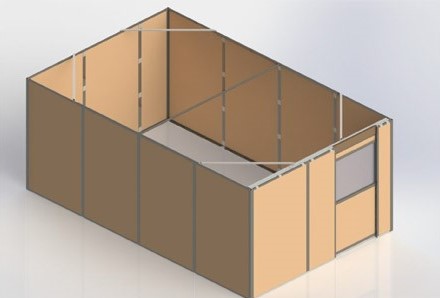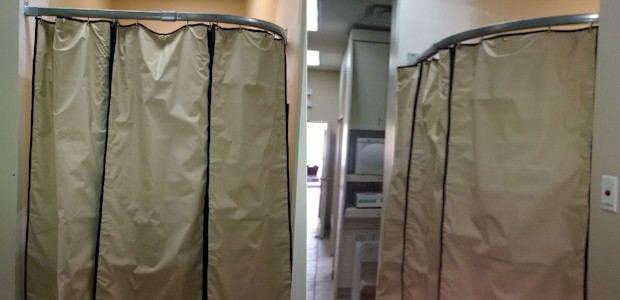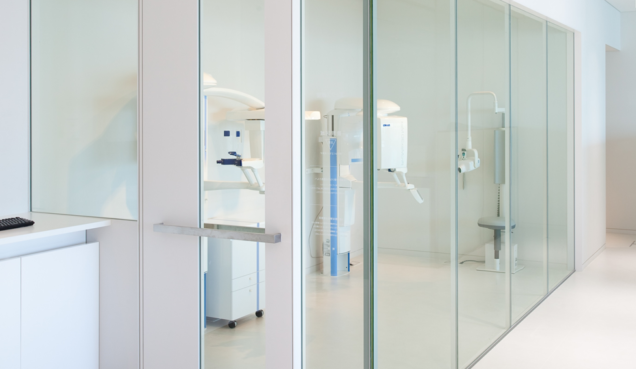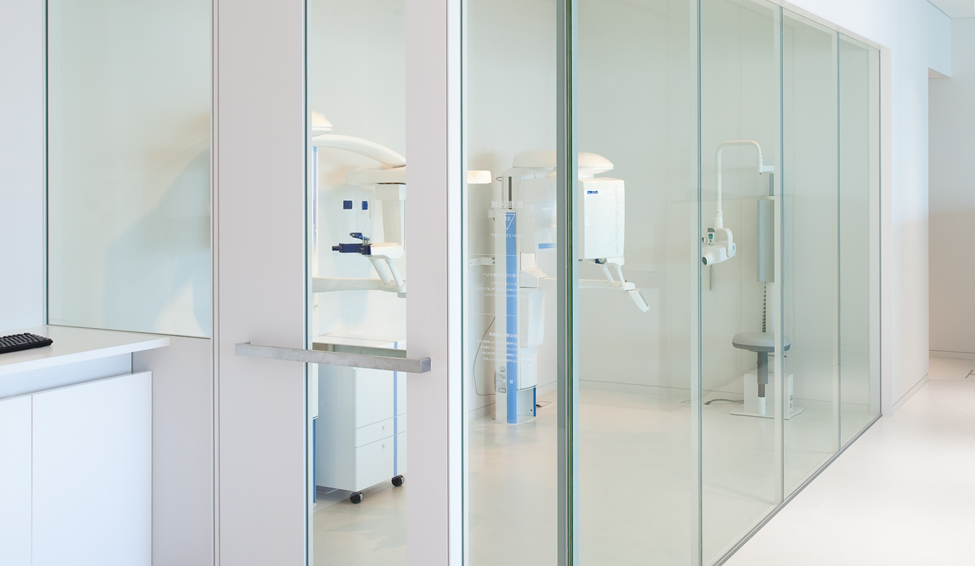An X-ray is produced by energy released from an accelerating electron and resulting radiation can pass through some, but not all material. The x-ray radiation then interacts with a detector and forms an image of the inside of an object or person. Because of the ability to “look through” materials that the human eye cannot see through, x-rays are used in a variety of industries including dental, non-destructive testing (NDT) and most importantly, the medical industry. While x-rays are a valuable diagnostic non-invasive tool with minimal risk to the patient, repeated long term exposure to x-rays can be harmful. Construction of hospitals and dental offices take steps to include radiation shielding that will reduce long term exposure from x-rays.
 One of the more commonly used material to provide shielding is sheet lead, as it comes in standard thicknesses that are adequate to shield x-ray radiation. Sheet lead can be installed on walls with screws and drywalling can be placed over top, or the lead can come already fixed to the drywall. For thicker pieces of lead, 3/8” plywood can be used to provide more support to each sheet. It is important when using lead sheet, lead drywall or lead plywood to cover up the seams between where the panels of shielding meet or where the screws pass through the lead. X-ray radiation travels in straight lines so seams need to be covered with lead strips or lead disks to cover screws.
One of the more commonly used material to provide shielding is sheet lead, as it comes in standard thicknesses that are adequate to shield x-ray radiation. Sheet lead can be installed on walls with screws and drywalling can be placed over top, or the lead can come already fixed to the drywall. For thicker pieces of lead, 3/8” plywood can be used to provide more support to each sheet. It is important when using lead sheet, lead drywall or lead plywood to cover up the seams between where the panels of shielding meet or where the screws pass through the lead. X-ray radiation travels in straight lines so seams need to be covered with lead strips or lead disks to cover screws.
Alternatives to install lead shielding without extensive construction is to use rolling barriers, EZ Shielding Panels, or pre-fabricated lead lined x-ray rooms. All three of these options use a system that encapsulates the lead in plastic and steel, minimizing the risk of lead exposure. Mobile barriers can be moved around and placed where needed. Lead glass shielding is also available to allow safe viewing through the shielding. MarShield EZ Shielding Panels can be easily installed on existing interior walls for added protection. Fully completed x-ray rooms are mostly used in the NDT industry, where x-rays need to be shielded in an open area. The rooms are free-standing and can include lead glass windows, and doors. Generally, lead shielding offered for these products start at 1/32” up to ¼” for x-ray shielding.
 Another product that can be used to shield x-rays is MarShield’s lead curtains are an economical solution to provide shielding to areas that a permanent wall or barrier would not be suited for, like a doorway. The curtains come in a variety of sizes and colours and are easy to install, with our heavy-duty overhead tracks. The lead equivalencies offered with lead curtains are 0.25mm up to 1.5mm. The outer materials of the curtains are nylon, vinyl or weblon.
Another product that can be used to shield x-rays is MarShield’s lead curtains are an economical solution to provide shielding to areas that a permanent wall or barrier would not be suited for, like a doorway. The curtains come in a variety of sizes and colours and are easy to install, with our heavy-duty overhead tracks. The lead equivalencies offered with lead curtains are 0.25mm up to 1.5mm. The outer materials of the curtains are nylon, vinyl or weblon.
X-rays are an essential tool in the healthcare industry, providing important diagnostic imaging in a quick and non-invasive method. Technology has ensured that a modern x-ray provides minimum radiation dose to patients, however, long term X-ray exposure can be harmful. Therefore, radiation shielding is important to install in x-ray imaging facilities. If you would like to learn more about x-ray shielding or have a unique shielding challenge, you can visit the MarShield website or contact MarShield directly, and we will help you find the best radiation shielding solution for you.
MarShield Custom Radiation Shielding Products provides radiation shielding solutions for the Medical and Nuclear Industries and is a division of Mars Metal Company. Contact us today to discuss your unique radiation shielding needs!



